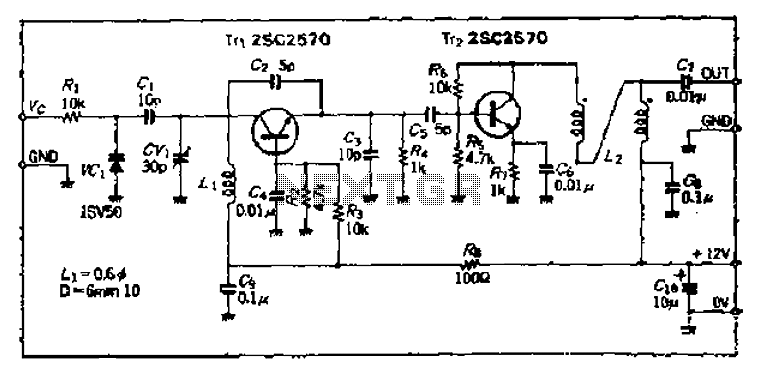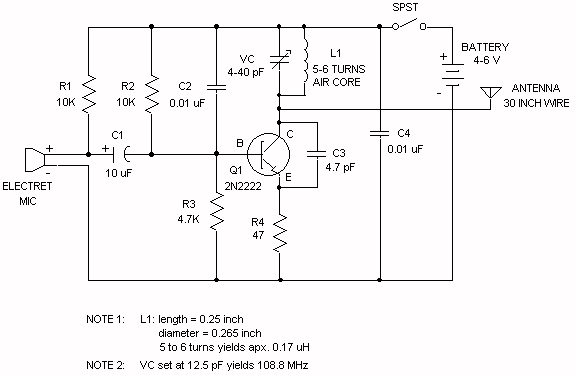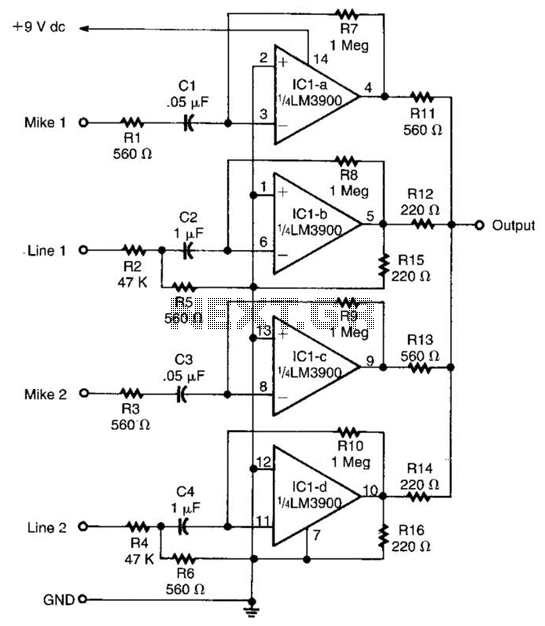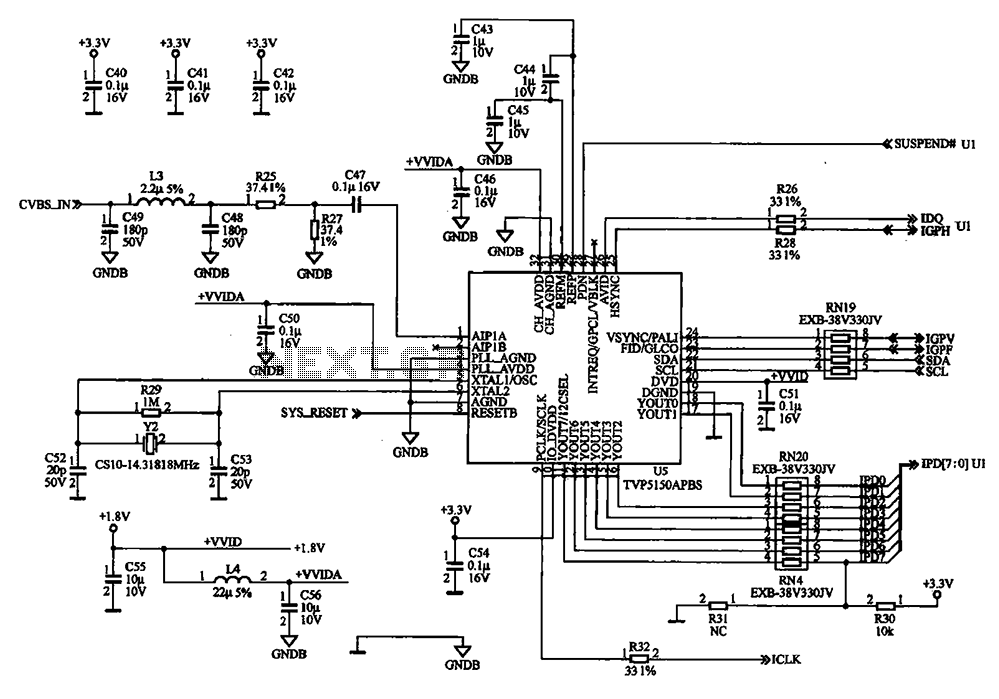
Sense of Time tester circuit

When switch S2 is activated, the circuit functions as an astable multivibrator, causing the LED to illuminate for approximately 0.1 seconds, flashing every 1.5 seconds. Due to the human reaction time being greater than this duration, it is unlikely to be perceived unless switch S1 is pressed. If the timing is accurately judged and S1 is pressed within the 0.1 seconds, the discharge of capacitor C1 is halted, causing the lamp to remain lit. The ON and OFF durations can be adjusted by modifying the values of resistors R1 and R2 or capacitor C1 to meet specific requirements.
The described circuit operates as an astable multivibrator, a configuration commonly used for generating square wave signals. In this setup, the timing of the LED's illumination is determined by the charge and discharge cycles of capacitor C1, which are regulated by resistors R1 and R2. When S2 is closed, the circuit enters its oscillation mode, causing the LED to flash at a defined interval. The time period of the oscillation can be calculated using the formula:
\[ T = 0.693 \times (R1 + 2R2) \times C1 \]
where T is the total period of the oscillation. The LED remains lit for approximately 0.1 seconds, which can be adjusted by varying the capacitance of C1 or the resistance values of R1 and R2.
Switch S1 serves a critical function in the circuit. When pressed during the LED's illumination period, S1 interrupts the discharge path of C1, effectively "freezing" the state of the circuit and keeping the LED lit beyond the initial 0.1 seconds. This feature allows for user interaction, enabling the operator to maintain the LED in an ON state if the timing is accurately judged.
To modify the flashing rate or duration of the LED, R1 and R2 can be adjusted to alter the charge and discharge times of C1. Increasing R1 or R2 will extend the ON time of the LED, while decreasing these resistances will shorten the duration. Similarly, changing the value of C1 will have a direct impact on the timing characteristics of the circuit.
This circuit can be utilized in various applications where visual alerts or indicators are required, especially in situations where user interaction is necessary to maintain the alert state. It is essential to consider the tolerances and ratings of the components used to ensure reliable operation within the intended application.When S2 is ON, the circuit here operates as an astable multi vibrator and the LED is lit for about o. 1sec, flasing every 1. 5 seconds. Since the human reaction time is more than this, you cannot catch it once it is seen o, by pressing S1.
If your sense of time interval is good, and you press S1 with in that 0. 1 sec, the discharging of C1 stops and then th e lamp stays lit. you may change the ON and OFF periods by changing R1 and R2 or C1 to suit your convenience. 🔗 External reference
The described circuit operates as an astable multivibrator, a configuration commonly used for generating square wave signals. In this setup, the timing of the LED's illumination is determined by the charge and discharge cycles of capacitor C1, which are regulated by resistors R1 and R2. When S2 is closed, the circuit enters its oscillation mode, causing the LED to flash at a defined interval. The time period of the oscillation can be calculated using the formula:
\[ T = 0.693 \times (R1 + 2R2) \times C1 \]
where T is the total period of the oscillation. The LED remains lit for approximately 0.1 seconds, which can be adjusted by varying the capacitance of C1 or the resistance values of R1 and R2.
Switch S1 serves a critical function in the circuit. When pressed during the LED's illumination period, S1 interrupts the discharge path of C1, effectively "freezing" the state of the circuit and keeping the LED lit beyond the initial 0.1 seconds. This feature allows for user interaction, enabling the operator to maintain the LED in an ON state if the timing is accurately judged.
To modify the flashing rate or duration of the LED, R1 and R2 can be adjusted to alter the charge and discharge times of C1. Increasing R1 or R2 will extend the ON time of the LED, while decreasing these resistances will shorten the duration. Similarly, changing the value of C1 will have a direct impact on the timing characteristics of the circuit.
This circuit can be utilized in various applications where visual alerts or indicators are required, especially in situations where user interaction is necessary to maintain the alert state. It is essential to consider the tolerances and ratings of the components used to ensure reliable operation within the intended application.When S2 is ON, the circuit here operates as an astable multi vibrator and the LED is lit for about o. 1sec, flasing every 1. 5 seconds. Since the human reaction time is more than this, you cannot catch it once it is seen o, by pressing S1.
If your sense of time interval is good, and you press S1 with in that 0. 1 sec, the discharging of C1 stops and then th e lamp stays lit. you may change the ON and OFF periods by changing R1 and R2 or C1 to suit your convenience. 🔗 External reference





